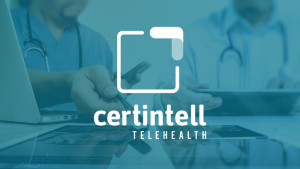To achieve success in uncertain times, clinical leaders must adapt and reimagine care for patients and staff to find a harmonious balance.
Webinar Presenters:
- Ronald Yee: CMO of Bureau of Health Workforce Peer to Peer Forum
- Beverly Williams: Chief Nursing Officer Memorial County Hospital
- Chester Austin: Medical Director, Northern Valley Indian Health
- Yvonne Fry Johnson: CMO Medical Associates Plus
Clinical leaders from across the country are stepping up in the COVID-19 era and finding unique ways to help their teams navigate uncertain times. During HRSA’s webinar on June 25th entitled, “Leading in Uncertain Times,” clinicians shared some of the many lessons learned during this pandemic.
Stories from Across the Nation
National — Reimagine Care
Missouri — Telehealth in Rural Settings: Be Flexible
California — An Organization’s Best Asset is its Staff
Reimagine Care
At the Bureau of Health Workforce, Ronald Yee is working with the Center for Disease Control (CDC) to develop NACHC’s COVID-19 response strategy. The purpose is to position NACHC as a key partner in the COVID-19 response and path to recovery on a national and state level for high-risk communities. NACHC is starting with six states with an intent to reimagine what better care could look like if clinical leaders used algorithms and data analysis to improve upon practice. NACHC wants to focus on highlighting clinical evidence, implementation science, adult learning and performance improvement.
Telehealth in Rural Settings: Be Flexible
Beverly Williams of Memorial County Hospital and her patient population live in Washington County, MO, just 65 miles south of the bustling epicenter of St. Louis. However, unlike providers in St. Louis, Memorial County Hospital ran into many troubles when trying to implement telehealth among its patient population. Williams said some of the barriers included: elderly patients not deeming broadband essential, some patients not being able to afford broadband, not having a smartphone or lack of skill level in regard to technology. But for each situation, Williams urged leaders to think of innovative solutions to circumvent these issues. For example, if a patient doesn’t have cell service, is using landline a solution?
To circumvent these issues, Memorial County Hospital and its four rural telehealth sites also implemented parking lot waiting rooms where patients called upon arrival and would conduct all their paperwork in the car. Williams said the following are her main takeaways from this uncertain time:
- Every patient situation is different. Think of how you might best serve a patient on an individual basis.
- Improvise and innovate when needed
- Use technology to full capabilities when available
- Understand your patient’s limitations and needs
- Be prepared to multi-task and problem solve in the moment
- With perseverance, you can overcome
An Organization’s Best Asset is its Staff
Chester Austin leads an FQHC in Chico, California. He said the key to clinic success is a strong staff, which makes a strong organization, but clinical leaders will not see either of the two if staff wellness is not maintained. To Austin, this has become even more apparent during the pandemic.
To remain productive, Austin said providers need the following:
- Open communication. Providers need to be allowed to have a voice and a platform to raise any concerns, without fear of judgment.
- To be informed. Providing staff with resources, references and guidance will help the work flow smoothly and allows physicians to be confident going into new situations.
- A safe environment. Providers are closely interacting with patients who may have COVID-19 and want to feel reassured. Telehealth is a great solution for many, but it’s important to remember that some providers still may need some more time to adapt to workflow changes. For example, to ease workflow, Austin’s health center grouped telehealth visits and in-person visits for certain blocks of time, so providers weren’t stressed going back and forth between the two.
- Leave options. It’s evident that the pandemic is taking a toll on the mental wellbeing and stress levels of providers. Consider giving providers more leniency on when they can take days off to recuperate.
- Income stability and job security. Providers want to know that even if budget cuts arise, they will be safe. Be as transparent as possible about the financial situation as concerns arise.
In all, adaptability will be the biggest key to a well-maintained health center during this time. By being open to innovation and insights from all the health center’s stakeholders, clinical leaders can squash some of the most worrisome problems before they arrive and ensure success for their clinic for the long run.



